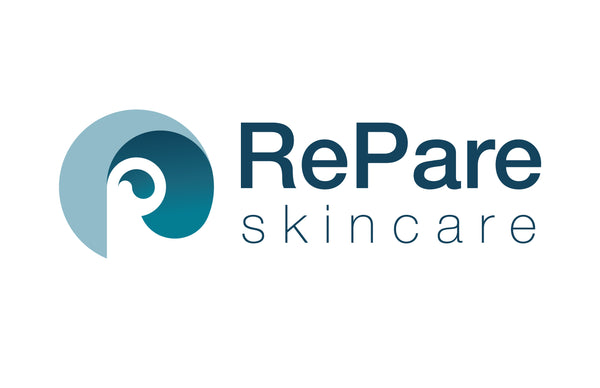Stepping out of the clinic with glowing, fresh skin after a chemical peel feels nothing short of rejuvenating. However, what you do in the hours and days following the procedure is crucial to maintaining that radiant complexion and avoiding potential pitfalls. TCA (Trichloroacetic Acid) and glycolic peels are popular choices for revitalizing the skin, but proper aftercare is essential to ensure optimal results.
In this article, we’ll explore common mistakes people make after a chemical peel and how to avoid them, ensuring your skin stays smooth, healthy, and rejuvenated. From sun protection to choosing the right skincare products, we've got you covered!

Immediate Steps to Take After Your Chemical Peel
The journey to rejuvenated skin begins immediately after your chemical peel procedure. Follow these crucial steps to support your skin’s healing process:
-
Use Gentle Cleansers: Opt for a mild, non-abrasive cleanser to avoid irritation.
-
Moisturize Consistently: Keeping your skin hydrated is vital for recovery. Use a fragrance-free moisturizer to maintain a healthy moisture barrier as your skin peels naturally.

-
Stay Sun-Safe: Protect your newly exposed skin by using a broad-spectrum sunscreen with at least SPF 30. Even if you’re indoors, sunscreen is a must to guard against UV rays that can cause hyperpigmentation and inflammation.
-
Avoid Exposure to Heat and Sunlight: Refrain from activities like tanning beds, saunas, or prolonged sunbathing. Your skin is especially vulnerable after a peel, so limiting exposure is key to preventing damage.
These immediate post-peel steps will help promote a smoother, more vibrant complexion and ensure your skin heals properly.
The Role of Sunscreen in Post-Peel Protection
After undergoing a TCA or glycolic peel, sun protection becomes more critical than ever. Sunscreen is your best ally in safeguarding your skin as it heals. A broad-spectrum SPF 30 or higher is essential to prevent sun damage, reduce the risk of hyperpigmentation, and accelerate the healing process.
Apply sunscreen generously, even if you don’t plan to be outdoors. This added layer of protection will keep your skin safe from harmful UV rays, allowing it to recover without complications. For at least six weeks post-peel, make sunscreen an everyday habit to ensure long-lasting results.

Understanding the Healing Process: What to Expect
During the initial healing phase (3 to 7 days), your skin will feel more sensitive. Mild itching, redness, and flaking are common as the skin renews itself. It’s important not to pick, scrub, or rub the peeling skin, as this can delay healing and cause scarring.
For peels done on areas like the chest, arms, or legs, healing may take a little longer due to the thickness of the skin. Be patient and follow post-care instructions specific to your peel.
If you experience discomfort, Repare Skincare's Numbing Cream can provide relief, reducing the stinging sensation often associated with deeper peels. Always consult with your dermatologist before incorporating any new products into your aftercare routine.
Creating a Personalized Aftercare Routine
Your skin is unique, and so is its response to a chemical peel. To ensure the best results, create a customized aftercare routine that addresses your specific skin concerns. Here’s how to get started:

-
Consult with a Skincare Professional: Always seek advice from your dermatologist or aesthetician to determine the best products and practices for your skin type.
-
Avoid Harsh Ingredients: Stay away from products containing retinoids, AHAs, BHAs, or exfoliants until your skin has fully healed. Stick to gentle cleansers, hydrating moisturizers, and sunscreen during this time.
-
Let Your Skin Breathe: Avoid wearing makeup for at least 48 hours after your peel to allow your skin to breathe and heal naturally.
-
Follow Specific Instructions: Download and review post-care instructions based on your peel’s strength, such as TCA or glycolic peels. These insights ensure you're on the right path to achieving clear, rejuvenated skin without complications.
Staying in touch with your skincare professional throughout your recovery will help you monitor your progress and make any necessary adjustments to your routine.
FAQ
Can I wear makeup after a chemical peel?
It's best to avoid makeup for at least 48 hours after your chemical peel. Allow your skin to breathe and heal without additional products that could cause irritation.
How long should I avoid sun exposure after a peel?
Try to limit sun exposure for at least 2 weeks after your peel. If you must be outdoors, ensure to wear a broad-spectrum sunscreen and protective clothing to guard your skin against UV rays.
Are there any skincare ingredients I should avoid post-peel?
Yes, avoid using retinoids, alpha hydroxy acids (AHAs), beta hydroxy acids (BHAs), and any products with harsh chemicals that could further irritate your skin. Stick to gentle, hydrating products that support healing.
When can I resume my usual skincare routine?
It's generally safe to resume your regular skincare routine about one to two weeks after your peel, once your skin is no longer sensitive or peeling, but follow the advice of your skincare professional.
What should I do if I experience excessive redness or discomfort?
If redness, irritation, or discomfort worsen beyond what's expected, contact your dermatologist or skincare provider. They can give you specific recommendations to soothe your skin and ensure proper healing.
Conclusion
Taking the right steps after a chemical peel can significantly enhance your results, helping you achieve smooth, glowing skin. By understanding common post-peel mistakes and customizing your aftercare routine, you’ll protect your skin from setbacks and prolong its rejuvenation.
At Repare Skincare, we offer a range of products designed to support your skin’s healing process after chemical peels. From numbing creams for immediate relief to broad-spectrum sunscreens that shield your skin from UV damage, our products are crafted to enhance your results.
Shop now at Repare Skincare and discover the best in post-peel care. Always consult with your dermatologist to ensure you're using the right products for your skin. By investing in proper aftercare, you're not just treating your skin today—you're setting the foundation for future skincare success.
Here's to a beautiful, revitalized you!

